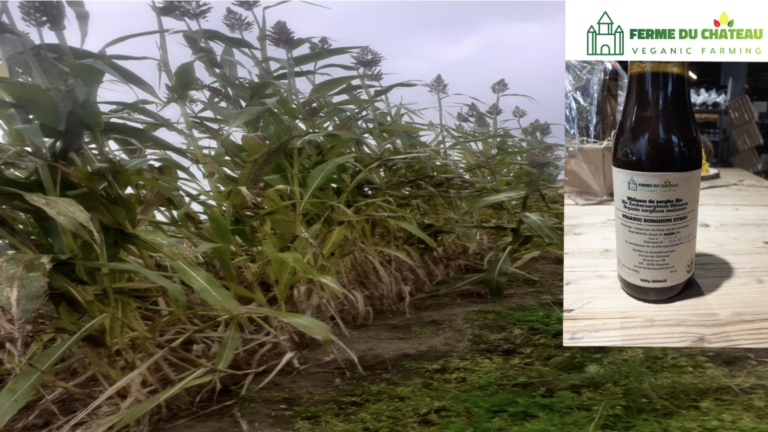Sweetening our future! Sweet sorghum : a climate-smart beet sugar alternative for Switzerland
by Bruno Graf

Given the current climate crisis and the exponential changes on the horizon, it is crucial to establish an alternative local sugar production chain.
In the case of the Canton of Vaud, according to the HES-SO Valais presentation on March 22 at Impact Hub Lausanne, there is an estimated 125% self-sufficiency rate for beet sugar, indicating the potential for reallocating land currently dedicated to sugar beet cultivation.
Despite different calculation methods and figures (Prométerre 2023), it would be wise to explore an alternative production source through sweet sorghum in large-scale farming areas already suited to this crop (such as La Côte). Given the recurring water deficits during the agricultural season (June to September) in recent years, sweet sorghum could offer a more resilient solution.
The establishment of such a production chain would require strong partnerships and investors to ensure the proper reception and processing of sorghum juice.
Additionally, research and varietal multiplication efforts should be initiated.
Certain multi-purpose varieties (for both sugar and flour production) could further enhance resilience in local agriculture.
Describe the problem statement and the opportunity statement on which your idea is based
The climate is tending towards a contraction of the cultivation area suitable for sugar beet. Currently, despite our large production basin in the Broye Vaudoise, German-speaking Switzerland generally seems more suitable for its cultivation. Some large-scale farming areas in Vaud are already suitable for growing forage sorghum, grain sorghum, and sweet sorghum, unlike in German-speaking Switzerland.
Being self-sufficient in sugar (“healthy” sugar) in the long term seems essential.
Despite its high yield per hectare compared to sweet sorghum, sugar beet cultivation has serious consequences on soil health (erosion) and generates a high number of negative externalities for society, including pesticide use, high fertilization requirements, and an energy-intensive process to transform it into sugar crystals.
What makes your idea radical?
The Swiss Confederation currently provides subsidies for sugar beet cultivation in both organic and conventional farming. These subsidies are secured until 2026 (CHF 2,100/ha). Sugar is an essential component in the food production chain, particularly in processed products.
It would be beneficial for society to consider the long-term negative effects of sugar beet cultivation, both on the environment and public health.
By establishing an alternative sugar supply chain, a multifactorial and positive approach could emerge.
Sweet sorghum is a C4 plant, meaning it has very high photosynthetic efficiency. Additionally, it is:
- Drought-resistant
- Tolerant to heat waves
- Suitable for a second cropping cycle
Regions that become unsuitable for sugar beet cultivation could transition to sweet sorghum, making sugar production possible in a more climate-resilient way.
What is the key environmental, social, and economic challenge addressed by your idea?
This is a radical solution to achieve sugar self-sufficiency in response to the climate crisis.
In the medium term, this approach would lead to sustainable progress for our environment, self-sufficiency, and health.
What is the differentiator from what is being done already?
The plant itself originates from the Sahel region (closely related to pearl millet) and has never been used for sugar production in Switzerland.
However, Amish communities in the United States have been cultivating sweet sorghum for sugar production since 1850.
